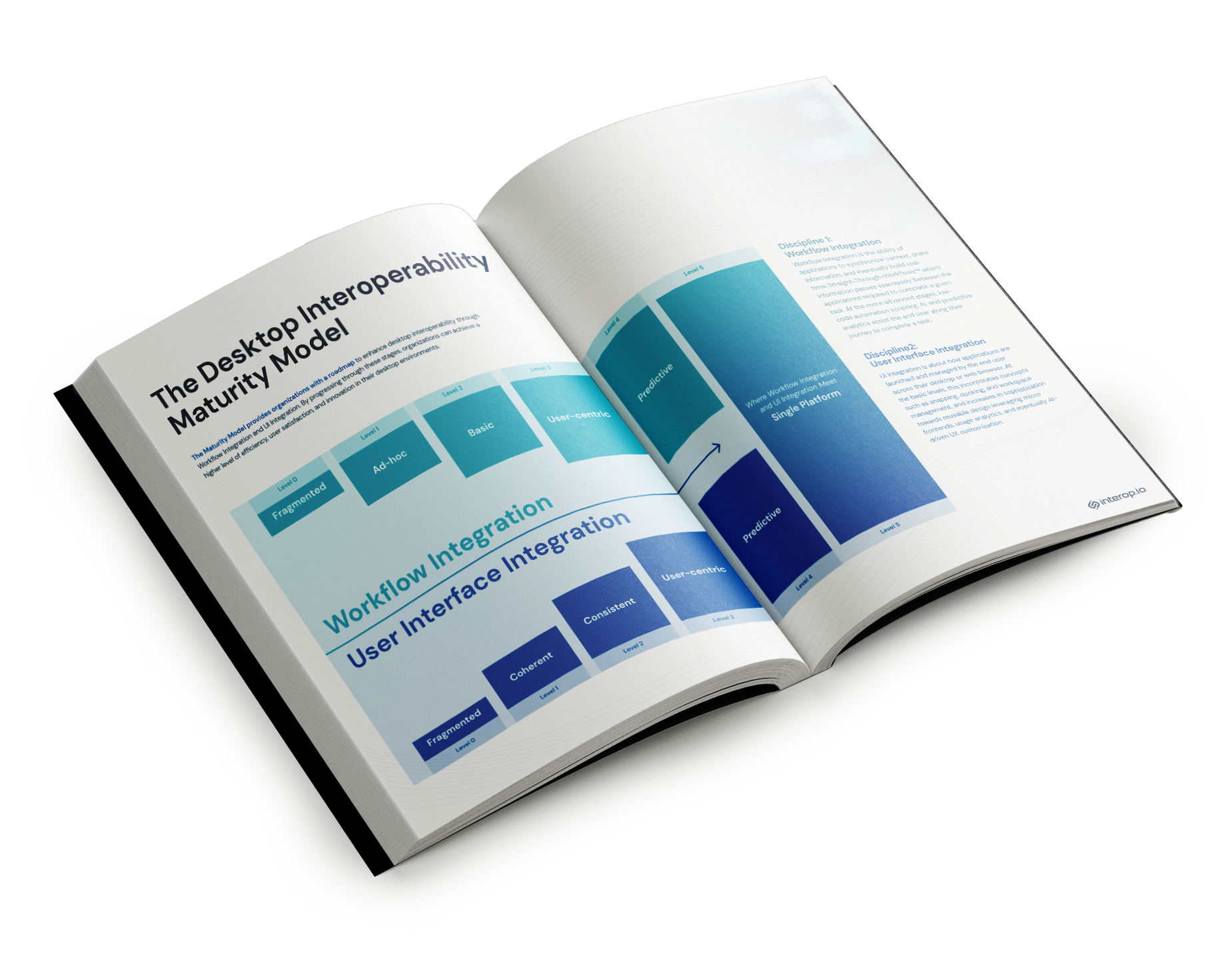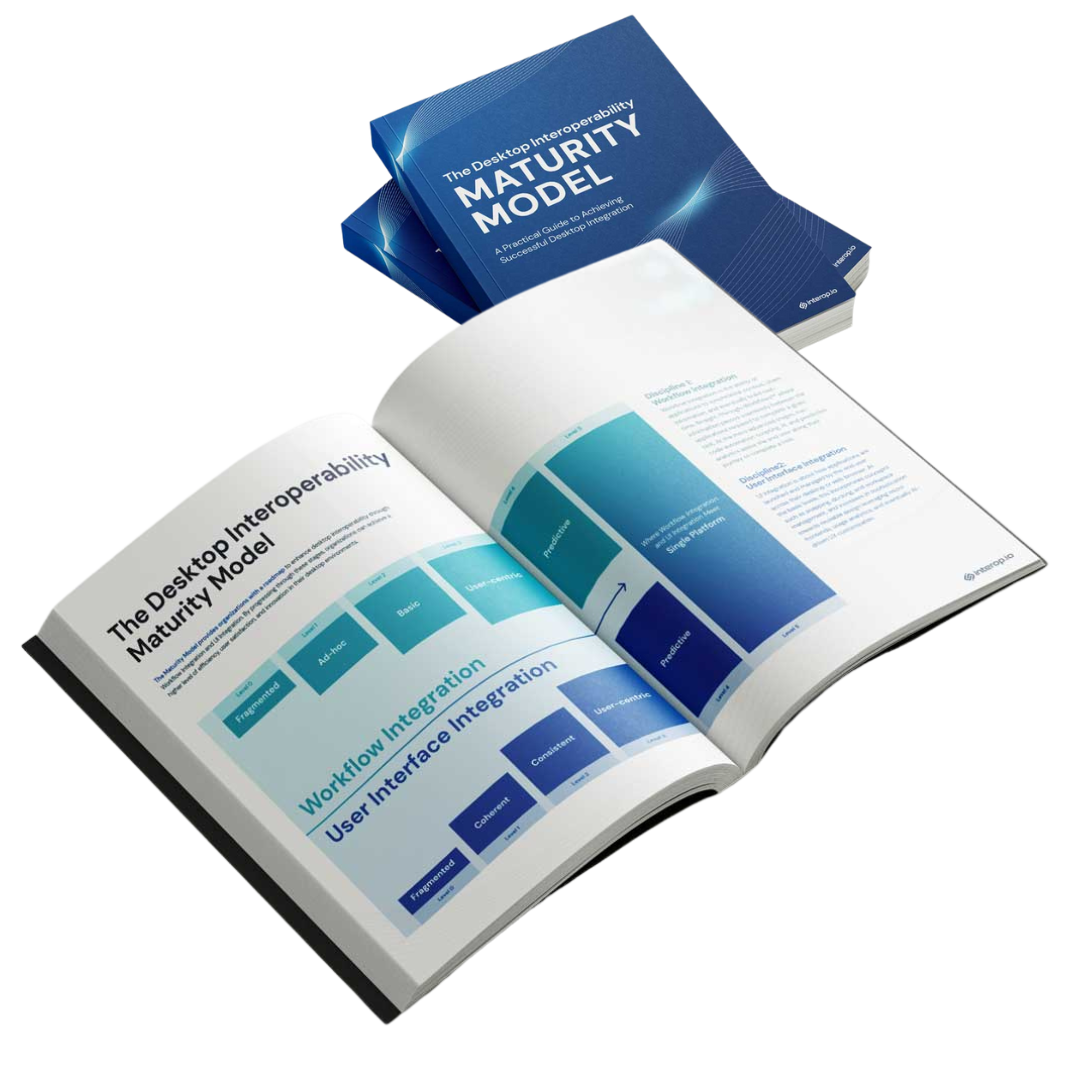The Desktop Interoperability Maturity Model
A Practical Guide to Achieving Successful Desktop Integration
Introducing the world’s first structured approach to implement, measure, and improve interoperability initiatives across capital markets. With The Maturity Model, learn interop best practices, journey mapping, and evaluation, so you can:
- Optimize processes.
- Gain the most from existing and new technology.
- Cut costs in times of economic and financial insecurity.

Download Now
The Key Disciplines of Interoperability

The first critical disciplines comprising The Maturity Model are Workflow Integration and UI Integration. Where does your organization fall across these disciplines? With The Maturity Model, you can:
- Assess your current interop level.
- Compare to your peers and others in the industry.
- Determine what level of interop you wish to achieve.
Build out your project plan. Map your interop goals. Communicate findings with stakeholders.
End users have a clearly defined pathway to optimizing business processes, uncovering data-driven insights, and reducing operational risk to be more effective day-to-day.
Developers can expect to reduce development, testing, and release times by 50%, as demonstrated by teams following the model.
Software vendors can better understand client interop goals, resulting in their apps becoming stickier, additionally — reduced development hours.

Identify and Avoid Setbacks
57% of our survey respondents agreed that the lack of collaboration was the biggest obstacle to successful interop projects. Other setbacks include old-school design thinking, insufficient desktop interop vendor evaluation, lack of governance, and the belief that firms must modernize the entire tech stack before embarking on desktop interop. Learn how to identify and avoid these common pitfalls when implementing interoperability.

 Download Your Copy of The Desktop Interoperability Maturity Model
Download Your Copy of The Desktop Interoperability Maturity Model